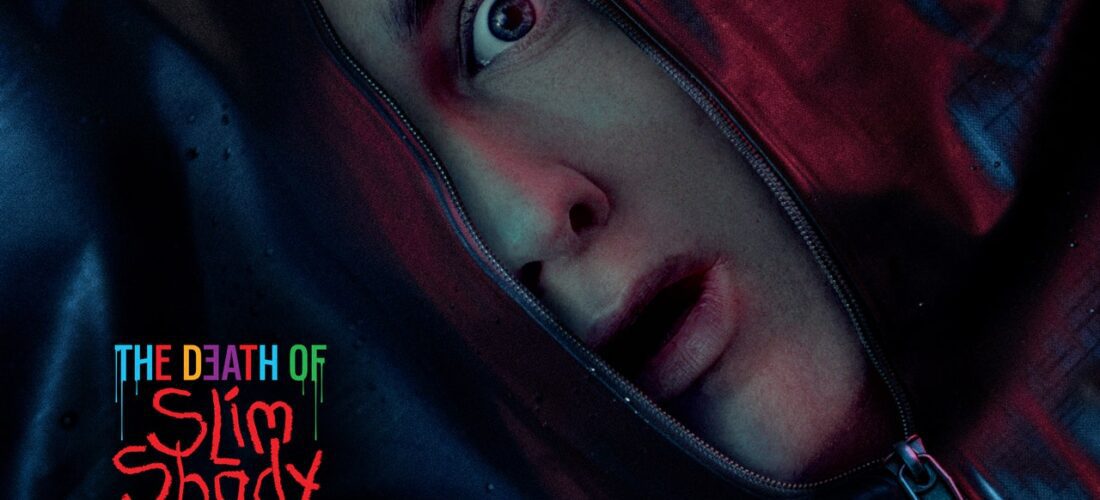Eminem used to be reckless and thrilling. In the early days, he was a cruise missile slicing through the sky with the names of his targets spray-painted on the side. He aired grievances with a bullhorn, scaffolding crude insults with dynamic turns of phrase and flashy internal rhymes. Eminem could be arrestingly clever, sometimes issuing a line as meticulously written as it was shocking, but you’d never accuse him of being subtle.
That was 22 years ago. A generation removed from The Eminem Show, his last great album, Eminem is a shadow of his former self. His lithe and menacing flow now feels antiseptic and strained. The high-pitched, manic tenor of his voice gave way to an ever-ratcheting growl; any East Coast groove or nervy West Coast slink in his beats was replaced by chintzy Casiotone melodrama. He became blocky and unwieldy, careening through tracks with the grace of a Cybertruck crashing into a ditch.
His anger and defensiveness never dissipated, though. By the time he dropped his second album, The Marshall Mathers LP, his early screeds yearning for a colorblind hip-hop meritocracy had already lost their impact—by that point, Eminem was an unavoidable cultural force. Those diatribes sound even whinier now. He remains one of the biggest-selling and most-streamed artists in the United States, but Em’s perpetually on a back foot, like a wealthy barbarian at the gates working as hard as he can to convince his critics he’s worthy of praise. His music still clearly strikes a chord for a sizable audience, but he seems to look past them, more concerned with convincing someone—anyone—that he’s the deadliest to touch a mic.
Seldom does a blockbuster album sequel recapture that initial magic; The Marshall Mathers LP 2 often felt like trying to draw the original from memory with expensive crayons. Em honed his technical skills so sharply—the lightning-speed flow on “Rap God,” the precision syllable-matching on “Legacy”—that it rendered everything sterile. Notably, he tried to distance himself from his Slim Shady character, using several songs (including the smash hit “The Monster” with Rihanna) to destroy—or at least explain away—his trollish persona. Ten years and three middling records later, he’s back to kill off his alter ego for good. The Death of Slim Shady: (Coup de Grâce) is his attempt at Jungian shadow work, opening the closet for a knock-down drag-out screaming match with the skeletons.
It begins with the sound of a hocked loogie. It could be Marshall Mathers trying to rid himself of the taste Slim Shady’s words leave in his mouth. Or it could just be a warning shot: This is gonna be gross. “Renaissance” functions mainly as a list of Eminem’s bona fides, comparing himself to rap legends like Big Daddy Kane and spitting lightly chuckle-worthy double entendres like, “Soon as I quit giving a fuck I started to sell a bit.” Near the end it devolves from a brash pen exercise to an attempt to shield himself from the criticism he can already feel coming. You get the distinct feeling we’ve been here before: “Premonition,” which opened Music to Be Murdered By, covered the same ground. It’s a grim harbinger that we will be exploring no new territory for the next hour.
